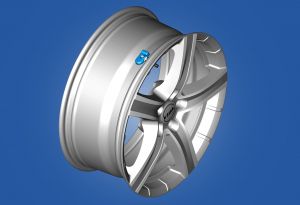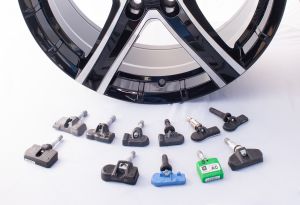Achieving Perfect Pressure
The vehicle is noticeably pulling to the right. The driver may first suspect a problem with the steering system, but then comes the idea to check and adjust the tire pressure – this turns out to do the trick, and the problem is fixed. Situations like this could have happened often a few years ago. These days, however, technology helps us in such cases. Since November 1, 2014, a tire-pressure monitoring system (TPMS) has been required for all newly approved vehicles. Retrofitting is possible but not mandatory.
 Correct air pressure is a decisive factor for the reliable and efficient operation of a vehicle. The proper amount of air in tires ensures ideal cornering and lower rolling resistance, thus reducing both wear and fuel consumption.
Correct air pressure is a decisive factor for the reliable and efficient operation of a vehicle. The proper amount of air in tires ensures ideal cornering and lower rolling resistance, thus reducing both wear and fuel consumption.
The TPMS monitors tire pressure and informs the driver of possible anomalies through a display. There are two different technologies for this: indirect TPMS and direct TPMS. The indirect method uses ABS/ESP sensors, which determine when the wheels are rotating faster than usual. This occurs in cases of decreasing tire pressure, since this reduces the rolling circumference of the tire. Indirect systems only work when the vehicle is moving and do not indicate which tire requires attention. However, such systems also result in no additional costs when the tires are changed.
The direct TPMS is more complex and expensive, but also more convenient. Sensors on the valves transmit the exact tire pressure to the on-board electronics, which display the values to the driver on the dashboard. This can be done for each tire individually and also works when the vehicle is not moving. It is advisable to have a separate set of sensors for each set of tires you own. When switching out the sensors along with the tires, new rubber seals and valves will also be necessary.
Speaking of service: every tire change with a direct TPMS should include an inspection of the sensors as well as valve maintenance. For this reason, it is smart to rely on expert help for tire service and seek out a mechanic. Although the TPMS typically works reliably, you should still check the tire pressure at least every 14 days independently of the automatic monitoring.
The good news for all fans of attractive alloy wheels: Regardless of whether your vehicle is equipped with a TPMS or not, you can freely choose any wheel rim that has been approved for it.


